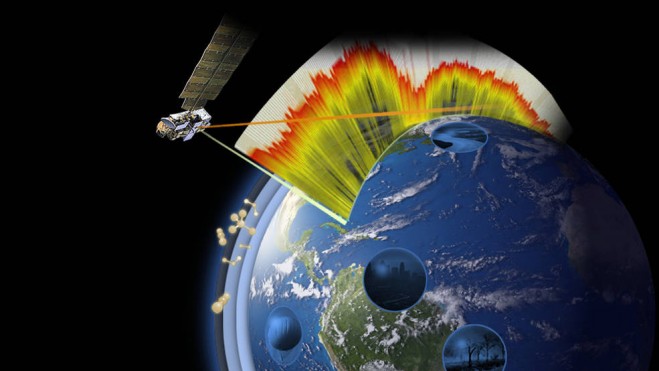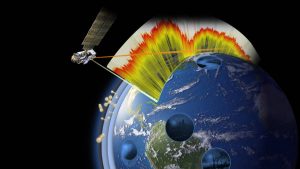

TES collected spectral “signatures” of ozone and other gases in the lower atmosphere. (Credit: NASA)
On Jan. 31, 2018, NASA ended the Tropospheric Emission Spectrometer’s (TES) almost 14-year career of discovery. Launched in 2004 on NASA’s Aura spacecraft, TES was the first instrument designed to monitor ozone in the lowest layers of the atmosphere directly from space. Its high-resolution observations led to new measurements of atmospheric gases that have altered our understanding of the Earth system.
TES was planned for a five-year mission but far outlasted that term. A mechanical arm on the instrument began stalling intermittently in 2010, affecting TES’ ability to collect data continuously. The TES operations team adapted by operating the instrument to maximize science operations over time, attempting to extend the dataset as long as possible. However, the stalling increased to the point that TES lost operations about half of 2017. The data gaps hampered the use of TES data for research, leading to NASA’s decision to decommission the instrument. It will remain on the Aura satellite, receiving enough power to keep it from getting so cold it might break and affect the two remaining functioning instruments.
There are no upcoming events.
